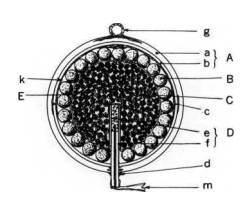To create a safe and successful fireworks display, one needs to understand the different components that go into creating a firework, and the Bickford fuse is one such component. In this blog post, we will be taking a closer look at the Bickford fuse, also popular known as chinese fuse and how it is used in fireworks.

What is a Bickford Fuse?
Bickford fuse is a type of slow-burning fuse that is used in fireworks to ignite the pyrotechnic composition. It is a flexible and durable cord that is made of cotton and is coated with a mixture of chemicals that make it burn at a controlled and steady rate. The Bickford fuse is named after its inventor, the English chemist Henry Bickford, who developed this fuse in the late 1800s and was first used in mining operations, which brought great security.
Why is the Bickford Fuse Important in Fireworks?
The Bickford fuse is an essential component in fireworks as it provides a reliable and consistent ignition source. It burns at a constant speed, which means that the time between lighting the fuse and the ignition of the pyrotechnic composition can be accurately predicted. This is crucial in ensuring the safety of the audience and the firework technicians as it allows for proper timing and coordination of the fireworks display and it is why it is so widely used as time fuse for shells.
Additionally, the Bickford fuse is flexible and durable, making it easy to work with and handle. It can be easily inserted into the firework shells, and its slow-burning nature allows for a safe distance to be maintained between the lighting of the fuse and the ignition of the pyrotechnic composition.
Conclusion
The Bickford fuse is an essential component in fireworks, and its use is crucial in creating a safe and successful fireworks display. Whether you are a seasoned fireworks enthusiast or just starting out, it is important to understand the Bickford fuse and how it is used in fireworks. With this knowledge, you will be able to create amazing and memorable fireworks displays for your friends, family, and community.

Comments